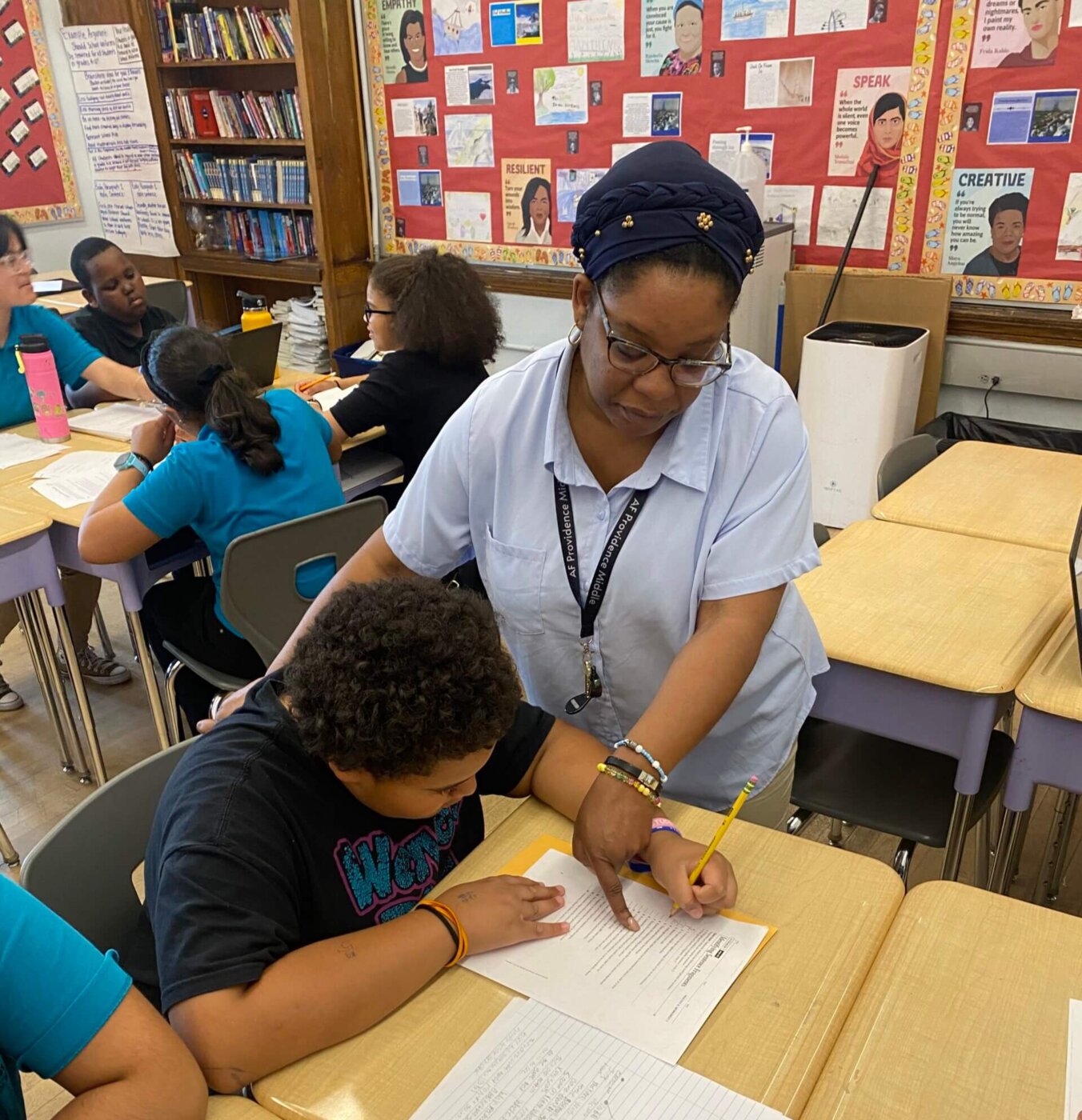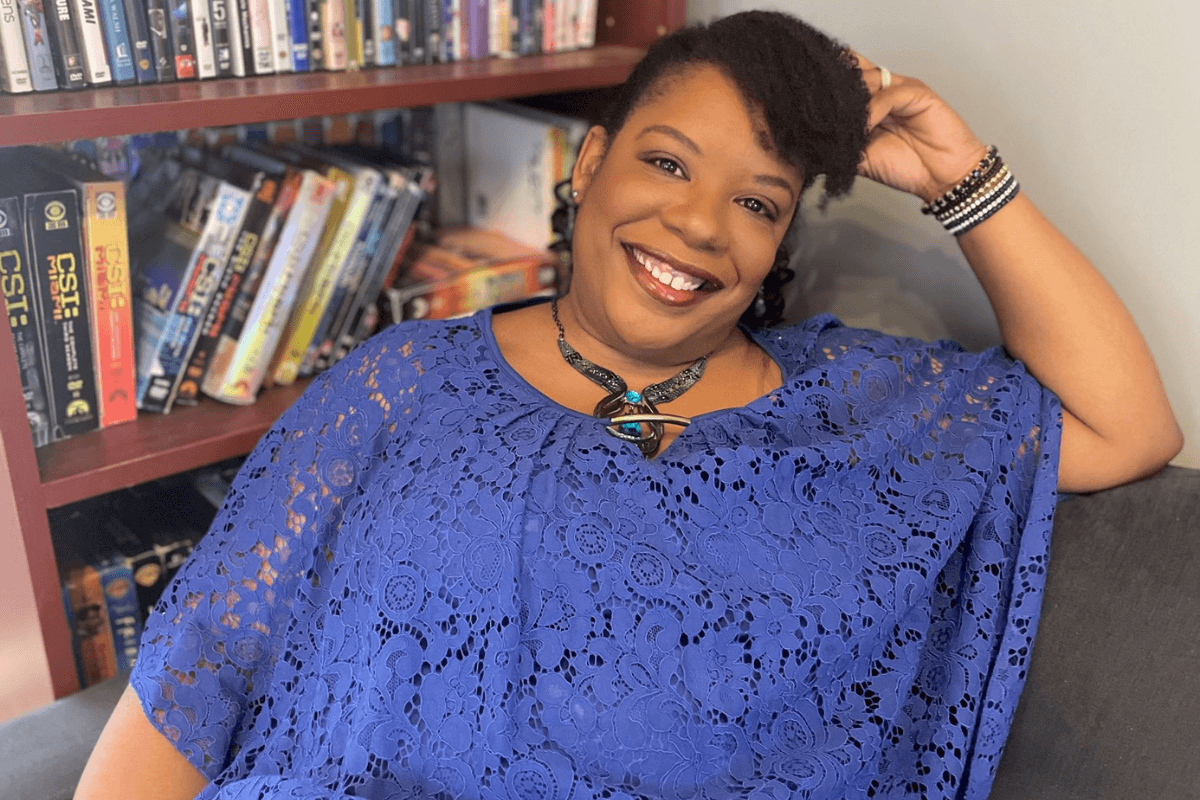 “AF rigorously examined many curriculums before choosing Wit & Wisdom,” Margaret explains. “I’m grateful it was chosen because of the number of elements that support my practice as an anti-racist educator.”
While there are gaps in cultural relevance along the lines of representation and viewpoints of texts, Wit and Wisdom offered the strongest foundation to build both knowledge and reading proficiency, which is at the core of anti-racist literacy instruction.
Several additional factors drove the decision: the exceptional quality of the content, which had undergone rigorous external review and received high ratings; its seamless alignment with the Science of Reading principles; complementarity with AF's existing K-2 phonics program, FUNdations and decodable texts, Geodes; and its comprehensive approach to foundational reading skills across K-8, offering crucial instructional support, especially for struggling readers in grades 6-8, as well as differentiated support for multilingual and exceptional learners.
Margaret added, “It’s a conversation-based curriculum, which is great for our Black and Brown students. It’s interactive. However, it didn’t set them up for independent work, so we’ve made changes to supplement this.” Additionally, AF educators identified and updated parts of the program to be more culturally responsive and anti-racist, such as leveraging critical literacy perspectives to challenge white dominant narratives and substituting some texts to increase representation and diversity.
But like everything in education, the success of any curriculum is driven by how it is implemented by classroom teachers. A curriculum is just a collection of objectives, texts, and instructional materials. It’s all just words on a page until its power is unleashed by the creativity of a talented teacher. The art of teaching is bridging the curricular material to the unique minds of the students in front of you.
Margaret shared that the training for Wit and Wisdom was intense and required her to really invest in learning the material through her students' eyes. She watched all of the training videos for Wit and Wisdom and completed the unit as if she were a student.
“An effective teacher knows their content; a powerful teacher not only knows the content but also the resources of how the curriculum works and how it meets the goals. I put myself in the student’s shoes, asked thousands of questions, signed up for extended training, and tried to really understand it and then understand the resources they offered to the students as well.”
Margaret's implementation strategy for Wit & Wisdom reflects her dedication to student-centered learning. She ensures every student can thrive within the curriculum's framework by integrating supplementary materials and fostering independent thinking. Collaborating with colleagues, Margaret developed resource packets and structured activities to scaffold students' comprehension and participation, ultimately fostering a rich learning environment.
Margaret has already witnessed the transformative power of the new curriculum. By unpacking complex questions and empowering independent inquiry, student academics have improved significantly and kids have sharpened their critical thinking skills.
“AF rigorously examined many curriculums before choosing Wit & Wisdom,” Margaret explains. “I’m grateful it was chosen because of the number of elements that support my practice as an anti-racist educator.”
While there are gaps in cultural relevance along the lines of representation and viewpoints of texts, Wit and Wisdom offered the strongest foundation to build both knowledge and reading proficiency, which is at the core of anti-racist literacy instruction.
Several additional factors drove the decision: the exceptional quality of the content, which had undergone rigorous external review and received high ratings; its seamless alignment with the Science of Reading principles; complementarity with AF's existing K-2 phonics program, FUNdations and decodable texts, Geodes; and its comprehensive approach to foundational reading skills across K-8, offering crucial instructional support, especially for struggling readers in grades 6-8, as well as differentiated support for multilingual and exceptional learners.
Margaret added, “It’s a conversation-based curriculum, which is great for our Black and Brown students. It’s interactive. However, it didn’t set them up for independent work, so we’ve made changes to supplement this.” Additionally, AF educators identified and updated parts of the program to be more culturally responsive and anti-racist, such as leveraging critical literacy perspectives to challenge white dominant narratives and substituting some texts to increase representation and diversity.
But like everything in education, the success of any curriculum is driven by how it is implemented by classroom teachers. A curriculum is just a collection of objectives, texts, and instructional materials. It’s all just words on a page until its power is unleashed by the creativity of a talented teacher. The art of teaching is bridging the curricular material to the unique minds of the students in front of you.
Margaret shared that the training for Wit and Wisdom was intense and required her to really invest in learning the material through her students' eyes. She watched all of the training videos for Wit and Wisdom and completed the unit as if she were a student.
“An effective teacher knows their content; a powerful teacher not only knows the content but also the resources of how the curriculum works and how it meets the goals. I put myself in the student’s shoes, asked thousands of questions, signed up for extended training, and tried to really understand it and then understand the resources they offered to the students as well.”
Margaret's implementation strategy for Wit & Wisdom reflects her dedication to student-centered learning. She ensures every student can thrive within the curriculum's framework by integrating supplementary materials and fostering independent thinking. Collaborating with colleagues, Margaret developed resource packets and structured activities to scaffold students' comprehension and participation, ultimately fostering a rich learning environment.
Margaret has already witnessed the transformative power of the new curriculum. By unpacking complex questions and empowering independent inquiry, student academics have improved significantly and kids have sharpened their critical thinking skills.
 Margaret encourages teachers to embrace professional development opportunities, like those offered at AF, and leverage resources from organizations like Great Minds to enhance instructional effectiveness and student outcomes.
Transitioning to a new curriculum is far more complex than swapping out textbooks. It requires a rigorous process to evaluate various curricula across key organizational values, followed by a serious commitment by the entire AF community to both learn the curriculum and bring it to life in the classroom. That’s what pedagogy is—the art of adapting the curriculum to the unique needs of your students.
For teachers like Margaret, all the hard work will be worth it when they see a new generation of AF students developing the thinking skills to become lifelong readers, writers, and learners.
Margaret encourages teachers to embrace professional development opportunities, like those offered at AF, and leverage resources from organizations like Great Minds to enhance instructional effectiveness and student outcomes.
Transitioning to a new curriculum is far more complex than swapping out textbooks. It requires a rigorous process to evaluate various curricula across key organizational values, followed by a serious commitment by the entire AF community to both learn the curriculum and bring it to life in the classroom. That’s what pedagogy is—the art of adapting the curriculum to the unique needs of your students.
For teachers like Margaret, all the hard work will be worth it when they see a new generation of AF students developing the thinking skills to become lifelong readers, writers, and learners. 




